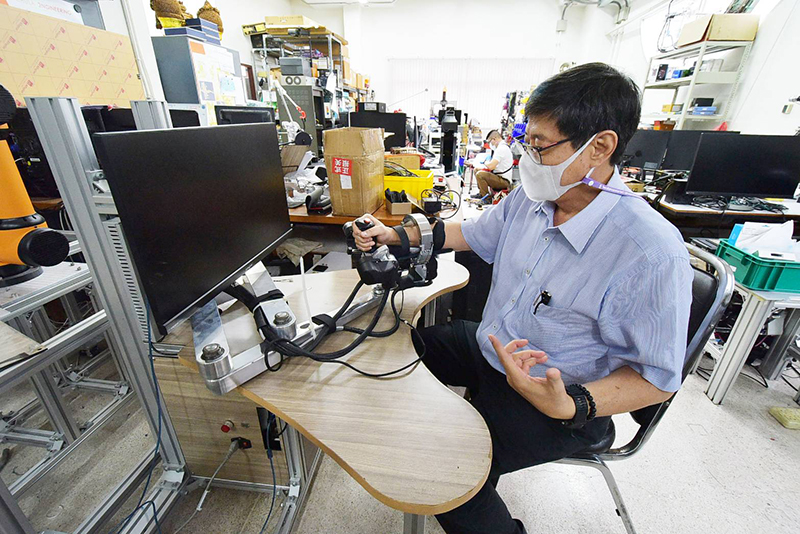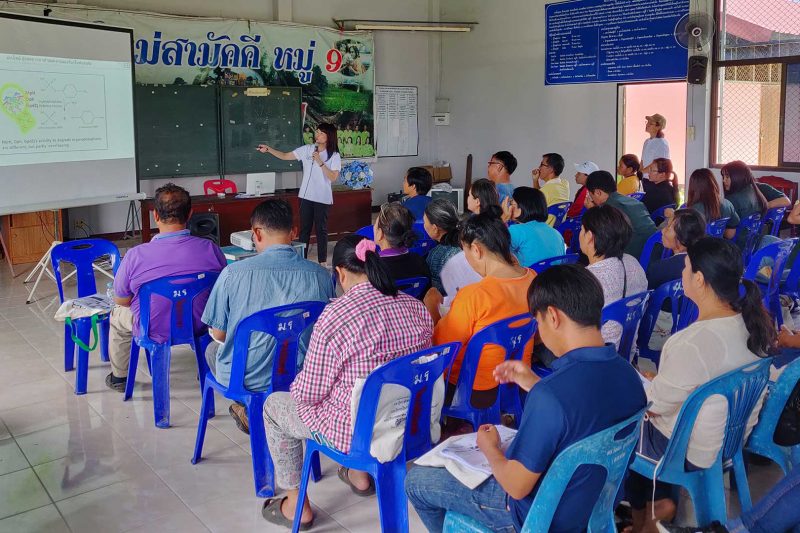Fulfilling a Royal Wish: Passing on ecological diversity to future generations
“Conservation of natural resources does not mean keeping them in the closet beyond the reach of anybody. But it means maintaining them on a sustainable basis so that they can be utilized properly, says Associate Professor Putsatee Pariyanonth with the Department of Biology in the Faculty of Science at Chulalongkorn University.
As natural resources all over the world are coming under increasing threat, ecological diversity is the key to their preservation for the benefit of future generations. In the spirit of the vision of the late King Bhumibol Adulyadej, as related to Her Royal Highness Princess Maha Chakri Sirindhorn, Chulalongkorn University has been dedicated to conserving Thailand’s plant diversity.
King Bhumibol first pointed out the importance of the conservation of plant genetic resources in 1960, and in 1992 HRH Princess Sirindhorn assumed responsibility for fulfilling the Royal wish by launching a plant genetic resources conservation project. Chulalongkorn University has been an integral part of this important project since 1998, tasked with studying and expanding its work to the public.
The project is intended to train personnel in the conservation of plant species and ecological diversity, while also building up a body of research on conservation and development of natural resources for the benefit of the people. Its mission is especially important at a time when natural resources are under threat from population growth, which will result in increased utilization of resources for food, housing, energy and medicines, while technological and other advances affect resources and the environment.
The main task of the project is to study plant species and genetic diversity in different geographic environments of Thailand from mountainous evergreen forest to rainforest, deciduous forest, deciduous dipterocarp forest, lowland evergreen and mangrove forests.
At least 20,000 plant species that are found only in Thailand have been studied or are being studied. They include 1,200 species of mushroom, 300 lichens, 633 ferns, more than 1,000 orchid species and over 10,000 vascular plant species.
Research in the different geographic environments has also been diversified to animal species including mammals, birds and reptiles, fish and invertebrates such as insects and mollusks, amphibians, protozoa and more.
Within the short period from 2013 to 2015, Chulalongkorn University produced 60 research works, among them “Diversity and Roles of White Ants and Ants in Deciduous Forest in Nan province” and “Diversity of Bats and Small Mammals in the Project Area and Taxonomy of Braconidae (Hymenoptera: Ichneumonoidea)”.
In addition, 12 books based on the research work have been produced and posted online for members of the public and young people to study. They include Resources from Sand to Undersea, which details the benefits derivedfrom tiger clam farming, the diversity of bats in the western forest complex, or handbooks on biodiversity for young people taking part in camps.
A biodiversity and natural resources conservation camp is held every year for your people under 18 to expand their awareness of the environment and natural resources protection in the hope that they will to pass on their knowledge to others in the future.
Chulalongkorn University also disseminates knowledge about natural resources and biodiversity to local communities, where residents can apply it in ways that benefit their occupations and promote conservation.
All staff of the university abide strictly by the framework of the master plan of the royally initiated project for the conservation of plant genetic resources, in line with the national research strategy for 2012-16 and Chulalongkorn University’s strategy and mission for 2012-16. The hope is that it will create awareness and raise the importance of protecting and properly utilising resources and biodiversity on a sustainable basis
The 2020 COVID-19 pandemic has left countless people without jobs, careers, or income. Unfathomable economic impact. Economic crisis offers opportunities to build social capital. These were the hiring guidelines for CLNR- one of the agencies funded by the Ministry of Higher Education, Science, Research and Innovation (MHESI) for economic relief. CLNR employed a total of 138 people in 6 provinces, namely Saraburi, Nakhon Nayok, Prachinburi, Kanchanaburi, Chonburi, and Chanthaburi to create a database of local resources for the Plant Genetic Conservation Project under the Royal Initiative of Her Royal Highness Princess Maha Chakri Sirindhorn during July – September 2020.
A significant amount of information about local resources has been collected. The information has been compiled to make it easier to find the most important facts about the region. Local resource base in Saraburi Province” to be released to the public in the year 2020 in print and digital books before the book’s content was updated and published a second time in 2022. After that project had ended, the Saraburi model which achieved the most complete and comprehensive data was used as a blueprint for future projects.
“This project not only provided income to locals affected by COVID-19, but we also wanted them to understand what their homes and communities are all about, to feel that they can work from home, and that it isn’t always necessary to leave their hometown to find work. This will create a a sense of love and pride in their native soil,” said Assistant Professor Dr. Noppadon Kitana, Director of CLNR, of the project’s goals.
Asst. Prof. Dr. Noppadon added that after the completion of the initial phase of the project, many employees started to recognize their community capital, and opportunities to build on the capitals in their hometowns.
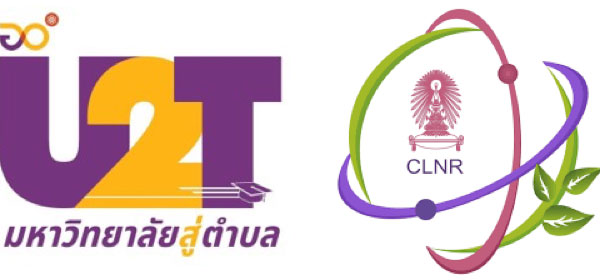
In 2021, the pandemic exacerbated the third and fourth outbreak waves. MHESI extended the project “University to Township (Tambon) – Building the Taproot for the Country (U2T)” by increasing the number of jobs in 3,000 townships nationwide. Many departments in Chulalongkorn responded by launching various projects to hire the target groups. CLNR continued to work with three townships in Kaeng Khoi District, Saraburi Province where the center is located: Huai Haeng, Cham Phak Phaeo, and Tan Diao.
CLNR saw an opportunity to raise people’s awareness of local wisdom and instill local pride and hired the target groups to participate in the Vetiver School project at the Center’s site in Saraburi.
“We taught participants about vetiver grass’s ecological farming, harvesting, and uses.Trainers from the Vetiver Conservation Network taught participants in 12 districts how to make handicrafts from vetiver grass.We asked Chulalongkorn University professors to lecture on contemporary design to spark new ideas.Speakers from private companies were invited to teach digital marketing, including a team from Lazada Thailand.” said Assistant Professor Dr. Noppadon Kitana, Director of CLNR.
Participants would have to collect community-based data, assess local residents’ poverty, and assess community health risk in addition to working with CNLR to develop vetiver grass products. Online learning platforms of Thai MOOC, the Stock Exchange of Thailand (SET), and the Digital Government Development Agency taught them English, digital literacy, social skills, and financial skills (DGA).
Although the employment program has already ended and is under its final assessment phase, the people of the communities continue living their lives with income, knowledge, and new skills that will create great opportunities for themselves and their communities.
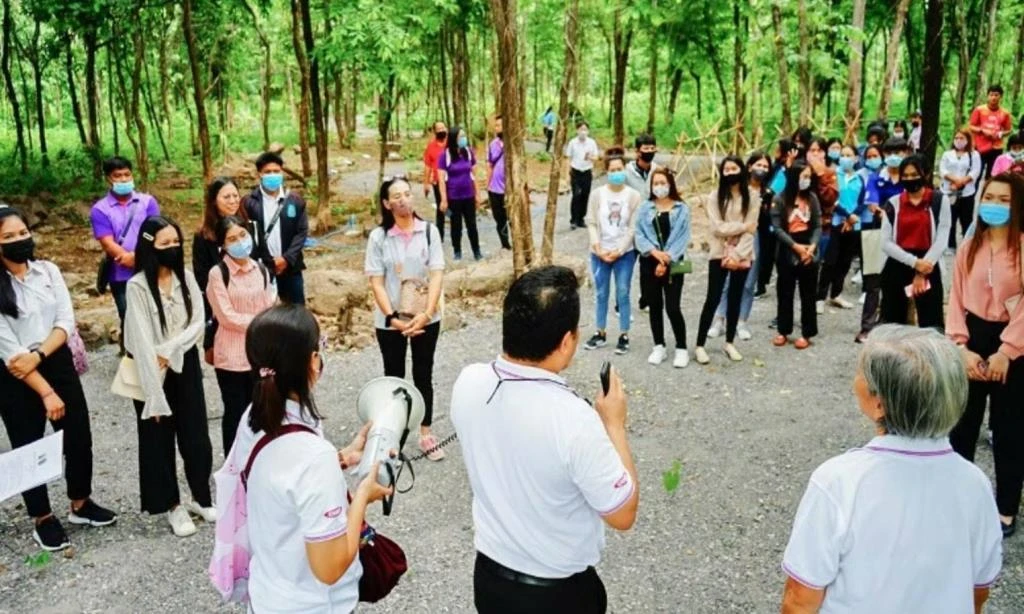
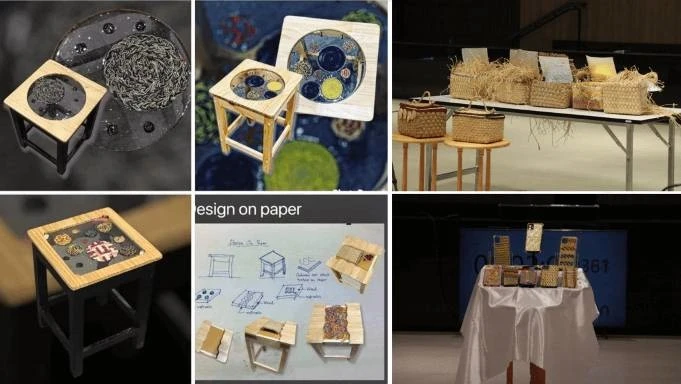
Source: Manager Online
[ https://mgronline.com/greeninnovation/detail/9650000008256 ]
BY
- Faculty of Science, Chulalongkorn University
- Center of Learning for the Region (CLNR) , Chulalongkorn University
- Ministry of Higher Education, Science, Research and Innovation
Related articles:
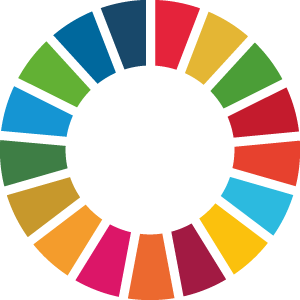
Related SDGs
Others
Chula Asian Research Center for Migration’s Reports
Asian Research Center for Migration, Chulalongkorn University collaborating with International Organization for Migration (IOM), conducted this research and completed a publication in 2019. This aimed to contribute towards the Governments of Thailand and Cambodia in their efforts to develop transparent and rights-based migration policies and programs which maximize positive contributions of migration to the economies and societies of both countries.

